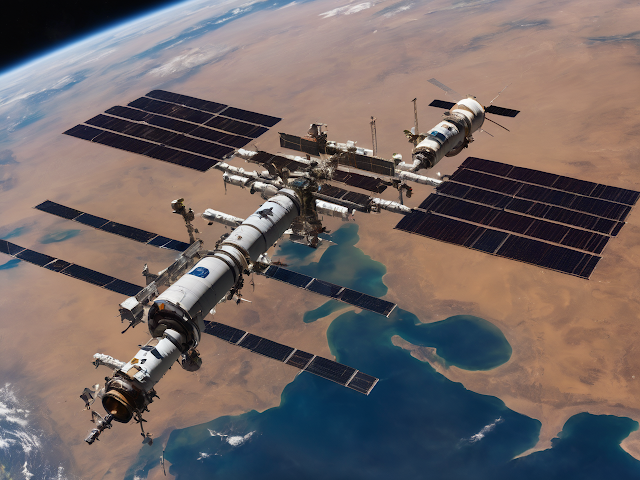The Cosmic Cleanup: Orbit Fab's Ambitious Mission to Tackle Space Debris
Since the dawn of the space age in 1957, over 15,000 satellites have been launched into orbit, half of which remain operational. However, the other half, depleted of fuel and past their service life, pose a significant threat to the International Space Station and other satellites. According to the European Space Agency, there have been over 640 incidents leading to fragmentation.
This has resulted in a vast cloud of space debris around the Earth, consisting of 36,500 objects larger than 10 centimeters and a staggering 130 million fragments between 1 and 10 centimeters. Cleaning up this mess is both costly and complex, with several proposed plans but no tangible results yet.
One innovative solution to this problem is to stop producing more debris by refueling satellites rather than retiring them when their fuel runs out. "You can't refuel satellites in orbit right now," says Daniel Faber, CEO of Orbit Fab. But his Colorado-based company aims to change that.
When satellites run out of fuel, they become hazardous debris, orbiting unpredictably at high speeds. Faber explains, "Without fuel, there's a whole paradigm where people design their spacecraft missions to move as little as possible. This means we can't have tow trucks in orbit to get rid of any leftover debris, we can't perform repairs and maintenance, we can't upgrade anything, and we can't check if something's broken."
A Revolutionary Approach: In-Orbit Refueling
The concept of in-orbit refueling and servicing of satellites was initiated by NASA in 2007 with the Orbital Express mission, demonstrating the successful docking and refueling of two specially designed satellites. Later, NASA worked on the Robotic Refueling Mission (RRM), further exploring the challenges of refueling existing satellites.
Currently, NASA is developing OSAM-1, set to launch in 2026, which aims to capture and refuel Landsat-7, an Earth observation satellite that has run out of fuel. This mission, according to NASA, will cost approximately $2 billion.
In contrast, Orbit Fab has no plans to address the existing satellite fleet. Instead, it focuses on future satellites, equipping them with a standardized port called RAFTI for rapid fluid transfer interfaces. This simplifies the refueling process, keeping costs low.
"We're going to create a low-cost architecture," says Faber. "There's currently no commercially available refueling port for satellites in orbit. Despite all our aspirations for a vibrant space economy, the reality is, we're working with a gas cap – we're a gas cap company."
The Orbit Fab Solution
Orbit Fab, branding itself as "gas stations in space," is developing a system comprising a refueling port, fuel shuttles to deliver fuel to satellites in need, and refueling tankers or orbital gas stations where spacecraft can collect fuel. The company has announced a price tag of $20 million for delivering hydrazine, the most common satellite fuel, into orbit.
In 2018, the company launched two testbeds to the International Space Station, testing interfaces, pumps, and plumbing. In 2021, it launched Tanker-001 Tenzing, a fuel depot demonstrator, influencing the design of the current equipment.
With the next launch scheduled for 2024, Faber expresses, "We're delivering fuel to geostationary orbit for a mission conducted by the Space Force Research Laboratory. At the moment, they see it as a demonstration, but it's generating significant interest from the U.S. government and those who recognize the value of refueling."
